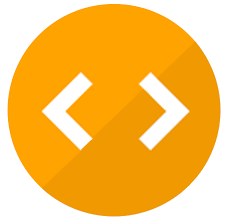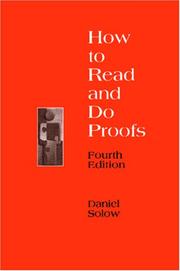Check nearby libraries
Buy this book

"This Fourth Edition features quick reference summaries or the proof techniques on the front and back covers a new forward uniqueness method, a new section on counter examples, and four new appendices in discrete mathematics, linear algebra, modern algebra, and real analysis that illustrate how the various proof techniques from the body of the text arise in doing actual mathematics."--Jacket.
Check nearby libraries
Buy this book

Previews available in: English
Showing 3 featured editions. View all 18 editions?
| Edition | Availability |
|---|---|
|
1
How to read and do proofs: an introduction to mathematical thought processes
2005, John Wiley
in English
- 4th ed.
0471680583 9780471680581
|
aaaa
|
|
2
How to read and do proofs: an introduction to mathematical thought processes
2002, Wiley
in English
- 3rd ed.
0471406473 9780471406471
|
eeee
|
|
3
How to read and do proofs: an introduction to mathematical thought processes
1990, Wiley
in English
- 2nd ed.
0471510041 9780471510048
|
eeee
|
Book Details
Edition Notes
Includes bibliographical references (p. 265-266) and index.
Classifications
External Links
The Physical Object
Edition Identifiers
Work Identifiers
Source records
Library of Congress MARC recordBetter World Books record
Promise Item
marc_columbia MARC record
marc_nuls MARC record
Harvard University record
Harvard University record
Work Description
This book provides a systematic approach that will help you master the basic techniques that are used in all proofs, regardless of the mathematical subject matter in which the proof arises. Once you know these techniques, you'll be better equipped to read, understand, and actually do proofs. You'll also learn when each technique is likely to be successful, based on keywords that appear in the theorem. -- Publisher description
Excerpts
Community Reviews (0)
History
- Created April 1, 2008
- 14 revisions
Wikipedia citation
×CloseCopy and paste this code into your Wikipedia page. Need help?
| June 17, 2025 | Edited by MARC Bot | import existing book |
| January 18, 2025 | Edited by MARC Bot | import existing book |
| December 22, 2023 | Edited by Tom Morris | Merge works |
| March 8, 2023 | Edited by MARC Bot | import existing book |
| April 1, 2008 | Created by an anonymous user | Imported from Scriblio MARC record |











